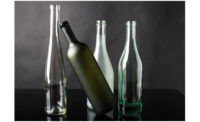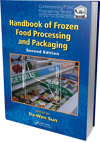Three Driving Forces Spurring Evolution of Packaging Market

Imagine a customer standing in the frozen food aisle staring at broccoli and corn. Without loyalty or preference for any one item, she needs to choose. Brand perception will likely play a big role in her decision. Chances are good the packaging will, too.
The package—which includes both the physical structure and the design or artwork—is really the final chance for brands to market their products and make a lasting impression. Delivering something that’s different and that speaks to a shopper’s need is the key to standing out. And ultimately, having a product that stands out increases the odds of having a product that ends up in shoppers’ carts.
One of the key trends we’re seeing as a differentiator in packaging today relates to the physical structure. More and more, consumers are looking for products that fit their lifestyle, and the physical packaging can go a long way to meet those needs.
Pouches Deliver Convenience
As people’s lives get busier and more eating occasions happen on the go, consumers are demanding products that can easily go with them. Pouches are becoming a major player in the convenience packaging space because they offer a wealth of opportunities for manufacturers. They can be made in almost any size and can accommodate most food types, including shelf-stable, refrigerated and frozen products.
Some innovative pouch designs coming to the marketplace now include those that can serve double duty as both a package and serving vessel, such as a pouch that holds fresh fruit on the shelf and opens up into a bowl for serving. Some can even be used for cooking as well, going from the freezer to the microwave, and then acting as a bowl or tray for serving.
Consumers’ and retailers’ growing interest in sustainability is also affecting packaging decisions. One of the key products we’ve identified for frozen foods is a new type of film that’s thinner than typical frozen packaging, but just as strong.
The new film offers the opportunity to reduce the thickness of the frozen food packaging by as much as 50 percent, meaning fewer raw materials used and less weight to transport and ship. Plus, unlike many plastic film packaging today, the material is recyclable, similar to plastic shopping bags.
Sustainability by Design
But shoppers can’t really know that a package is more sustainable just by looking at it, which is why the creative design aspect plays just as important a role. Sustainability can be conveyed by the colors and images used in the package design, as well as in key messaging callouts. For example, while rich jewel tones have been trending in many package designs for the last several years, using more muted greens and earth tones can help set a sustainable product or package apart and convey the idea of eco-friendliness. Images that conjure a sense of renewal, like leaves, plants and trees, can also help shoppers make an immediate and visceral connection.
This trend of sustainability is closely tied to the larger trend of authenticity. Shoppers want products that they feel are honest and real. One innovative tactic that brands are beginning to use is de-packaging—that is, using fewer and less occlusive materials to hold a product. If a product is in perimeter of the store (generally the fresher items), having clear packaging can be incredibly important. People want to know the artisan bread or organic salad mix they’re buying is truly fresh, for example.
Of course, not all products lend themselves to this trend, particularly many of those in the frozen and center-store aisles. But there are many other ways brands can drive authenticity. For example, rather than showing a staged photo of the final product, hand-drawn illustrations of individual ingredients can be creative way to communicate a more authentic message.
Packaging Tells a Story
Showing the individual ingredients in their natural state, such as fresh vegetables, herbs and spices, helps convey the feeling that a product is fresh, wholesome and healthy. Typefaces that look like they’re handwritten also help create a more authentic feel—as if the product were made and labeled right there in the store.
Another strategy that’s trending is telling the story of the product on the package. Shoppers today are more likely than ever to pick products up and read the labels in the store. This provides the opportunity to include a few lines about where the product comes from or what its history is to help further the feeling of authenticity and further differentiate from the competition.
To be sure, these packaging and design trends are not just passing fads. They’re a larger signal of the overall shift in retail—moving from what the retailer or brand wants to what the consumer wants. Retailers and brands, both large and small, must get used to delivering packaging that reflects these consumer-driven trends and driving sales from a more consumer-centric perspective overall.
Looking for a reprint of this article?
From high-res PDFs to custom plaques, order your copy today!








